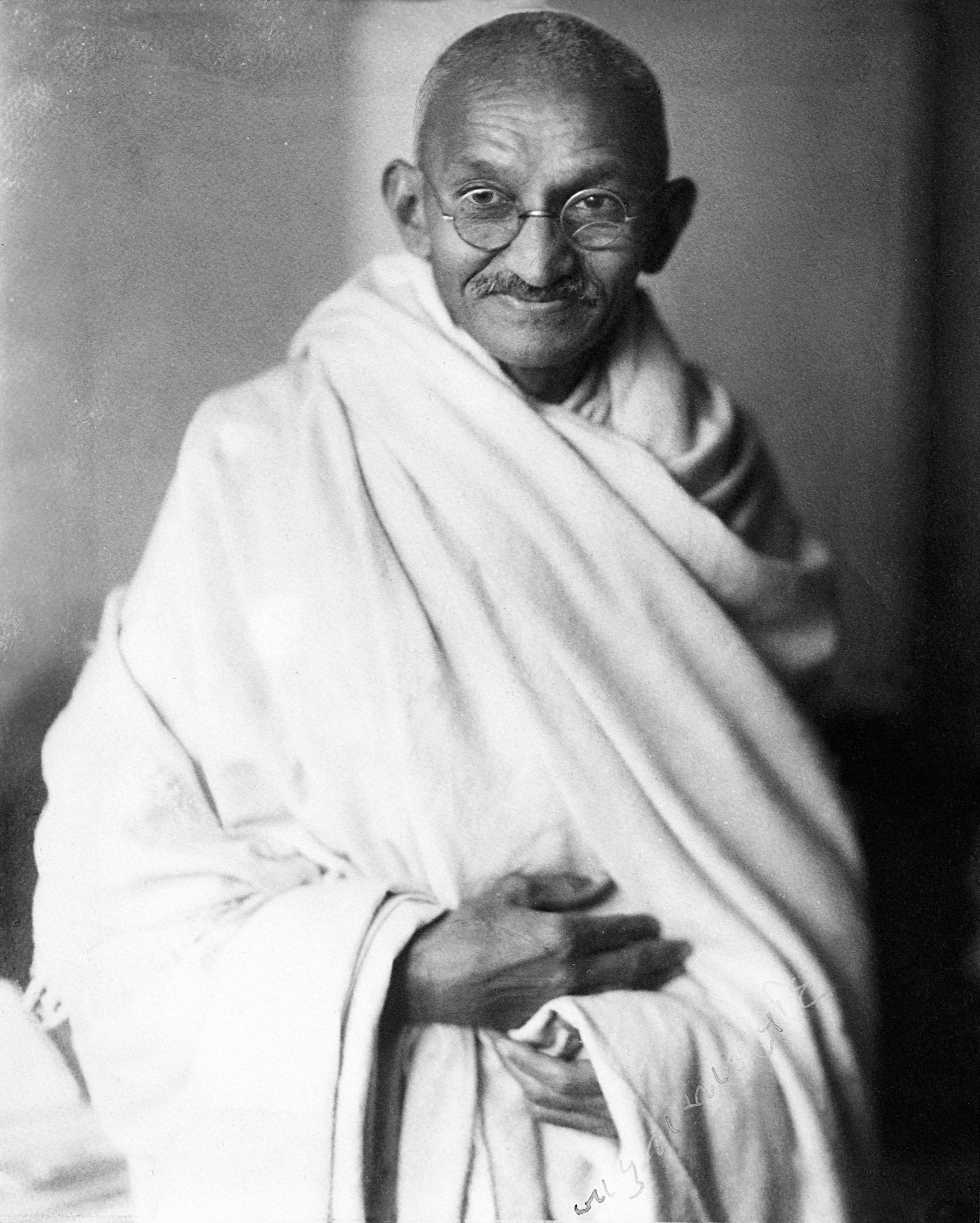Mahatma Gandhi was the leader of India's non-violent independence movement against British rule. Gandhi studied law and organized boycotts against most things British in the form of peaceful and civil disobedience. He was killed by a fanatic in 1948, ending his life as one of the most influential people in the world.
Gandhi was born in Porbandar, Kathiawar, India, which was then under British rule. Gandhi was an unremarkable teenager growing up. He was described as being so timid that he often slept with the lights on, even in his teenage years. Later, he would rebel and eat meat, smoke, drink, and steal change from the household servants.
One of Gandhi's most famous acts was the Salt March. At the time, the British had imposed a tax that banned Indians from collecting or selling salt (a dietary staple.) Wearing his famed white shawl and sandals and carrying a walking stick, Gandhi went on the Salt March.
This act of "civil disobedience" would spread like wildfire, causing mass protests and marches throughout India.
Fun Facts:
- Gandhi was nominated for the Nobel Peace Prize five times.
- Gandhi was assassinated on January 30, 1948. He was shot by a terrorist while attending a prayer meeting. He will not be forgotten.
- He won the Time Magazine "Man of the Year" in 1930.
Picture of Gandhi:

Note: The layout for the Historical Figure Wednesday will go something like this:
- Basic summary of the figure's life.
- An in-depth summary of childhood or early years.
- An in-depth summary of the figure's greatest accomplishment.
- A closing paragraph or sentence explaining the legacy of the figure's accomplishments.
This is and always will be subject to change, just like every other aspect of my blog. See you guys later!
Good choice!
ReplyDelete